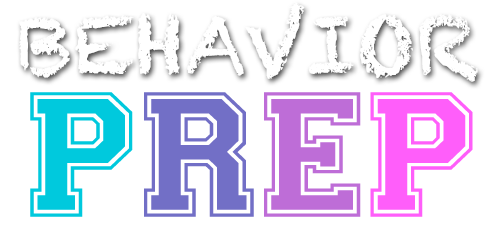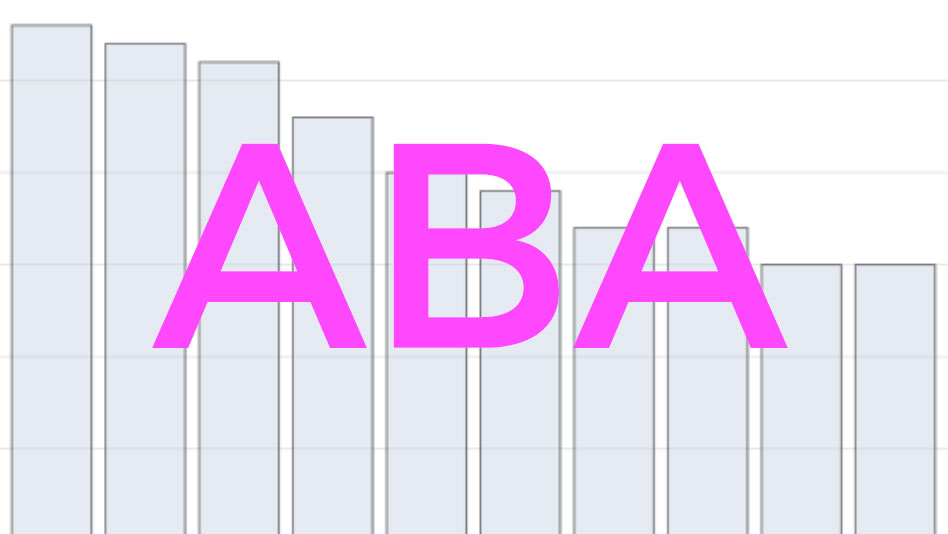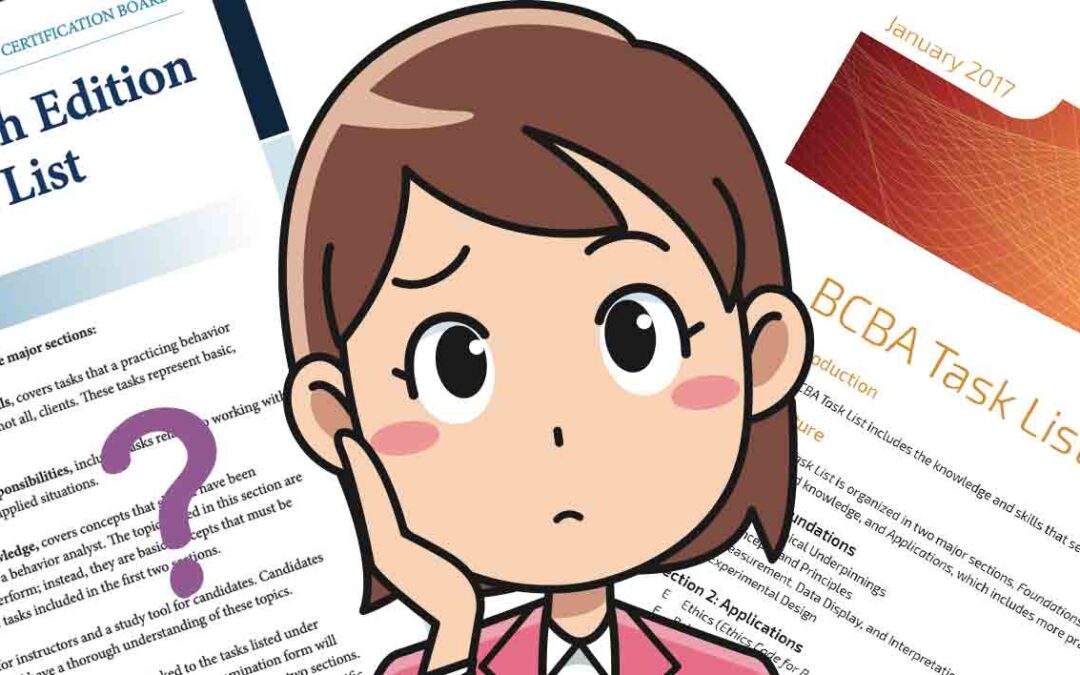BCBA 5th Edition Task List to 6th Edition Test Content Outline
What Do the Changes Mean?

Summary
- Higher cognitive demands: BCBAs must move from simple recognition to advanced synthesis, integrating concepts to create and evaluate complex behavior-change interventions.
- Contextual application: Behavior analysts must apply knowledge in dynamic, real-world situations, considering client-specific and cultural factors.
- Continuous evaluation: There is a stronger focus on ongoing data-driven decision-making and adapting interventions based on client progress and contextual changes.
- Cultural competence: Ethical decision-making and behavior-change interventions must now be integrated with a deep understanding of cultural and individual differences.
- Long-term focus: BCBAs are expected to ensure that behavior changes are maintained and generalized over time, requiring planning for sustainability from the start.
The shift from the 5th edition’s focus on recognizing concepts to the 6th edition’s focus on synthesizing and integrating knowledge in the BCBA Test Content Outline has significant implications for how behavior analysts approach their practice, study, and application of behavior-analytic principles. Here are the critical implications of this shift:
1. Higher Cognitive Demands and Problem-Solving Skills:
- 5th Edition Focus: The 5th edition centered on the recognition, identification, and description of concepts, which required learners to memorize and recall ABA principles. For example, learners were asked to define and provide examples of concepts like reinforcement, punishment, or extinction.
- 6th Edition Focus: In contrast, the 6th edition requires learners to based strategies.
| Implication: BCBAs are now expected to engage in higher-order thinking (based on Bloom’s taxonomy), such as analyzing, evaluating, and designing behavior-change procedures. They must develop more advanced problem-solving skills, which involve integrating multiple ABA concepts to create effective interventions tailored to specific client needs and contexts. |
2. Application in Complex, Real-World Scenarios:
- 5th Edition Focus: The previous edition’s tasks often involved more procedural knowledge and basic applications of principles. Learners were tested on whether they could implement standard procedures, such as reinforcement or punishment, in straightforward situations.
- 6th Edition Focus: The 6th edition emphasizes contextual application, where learners must adapt and integrate behavior-analytic principles in real-world, complex scenarios. This includes considering environmental, cultural, and individual variables when designing and evaluating interventions.
| Implication: BCBAs must be able to synthesize data from different sources, consider the broader context (e.g., social validity, family values, cultural sensitivity), and make informed decisions about which interventions are appropriate. This requires a more in-depth knowledge of how and why certain strategies work in specific settings rather than just knowing the procedures themselves. |
3. Increased Focus on Evaluation and Modification of Interventions:
- 5th Edition Focus: The 5th edition tested learners on whether they could identify or use behavior-change procedures without requiring much critical evaluation of their effectiveness. Interventions were implemented with less emphasis on continuous modification based on ongoing data.
- 6th Edition Focus: In the 6th edition, there is a strong emphasis on evaluation, modification, and continuous data-based decision-making. Behavior analysts must evaluate whether interventions are effective and, if not, make necessary adjustments.
| Implication: Learners must develop data interpretation and decision-making skills, ensuring that interventions are evaluated for effectiveness over time. This shift requires them to reflect on the intervention’s impact constantly, adjust techniques to meet client goals, ensure long-term success, and generalize behavior changes. |
4. Integration of Ethical, Cultural, and Contextual Factors:
- 5th Edition Focus: Ethical considerations were addressed, but they were more focused on adherence to professional standards and codes of conduct, with less attention paid to how these ethical principles might be integrated into everyday practice in diverse cultural contexts.
- 6th Edition Focus: The 6th edition introduces a broader cultural competence and contextual awareness. Behavior analysts must now integrate ethical guidelines with cultural sensitivity, ensuring that interventions are appropriate for the client’s social and cultural background.
| Implication: This shift requires BCBAs to go beyond recognizing ethical guidelines and synthesize ethical decision-making with cultural and contextual factors. BCBA must evaluate how their interventions align with client values and cultural norms and adjust them accordingly. This means behavior analysts must constantly assess the social validity of their interventions, ensuring that they are both practical and respectful of the client’s cultural and ethical context. |
5. Collaborative and Multi-Disciplinary Approaches:
- 5th Edition Focus: The 5th edition focused more on individual competence in behavior analysis, where the behavior analyst worked within a relatively narrow framework of applying procedures and principles in isolation.
- 6th Edition Focus: The 6th edition reflects the growing need for collaborative approaches and integration of knowledge across different disciplines. Behavior analysts must work alongside other professionals, families, and stakeholders to create holistic and effective interventions that integrate knowledge from various sources.
| Implication: BCBAs must collaborate effectively, integrating knowledge from multiple perspectives (e.g., speech therapists, educators, and family members) into their intervention plans. This means they need to synthesize behavior-analytic principles with insights from other fields, ensuring that interventions are comprehensive and well-rounded. |
6. Long-Term Generalization and Maintenance of Behavior Changes:
- 5th Edition Focus: The 5th edition emphasized achieving immediate results in behavior-change procedures, often with less focus on long-term generalization and maintenance of those changes.
- 6th Edition Focus: The 6th edition requires BCBAs to maintain behavior changes over time and generalize across different settings. For example, tasks like “design and evaluate procedures to maintain desired behavior change following intervention” (G.16)
| Implication: BCBAs must integrate strategies that promote long-term success, ensuring that behavior changes persist after interventions are faded or removed. This requires synthesizing knowledge of generalization techniques, reinforcement schedules, and environmental factors that support maintenance. BCBAs must be able to evaluate the long-term effectiveness of their interventions, not just their immediate outcomes. |
7. Data-Driven Adjustments and Flexibility in Practice:
- 5th Edition Focus: While the 5th edition emphasized the importance of collecting and interpreting data, it was often focused on static data points, such as pre-and post-intervention measures, with less emphasis on dynamic, real-time adjustments.
- 6th Edition Focus: The 6th edition requires BCBAs to be adaptive and flexible, making real-time data-driven decisions. This includes evaluating the ongoing effectiveness of interventions and adjusting them based on current data, as reflected in tasks like “making data-based decisions about the effectiveness of the intervention and the need for modification” (H.7)
| Implication: BCBAs must be skilled in interpreting ongoing data and making rapid intervention adjustments. They must be flexible and willing to modify their approach based on real-time feedback from data collection, ensuring that interventions are continuously aligned with the client’s progress and needs. |
Graphic Reference: https://tips.uark.edu/using-blooms-taxonomy/#gsc.tab=0






